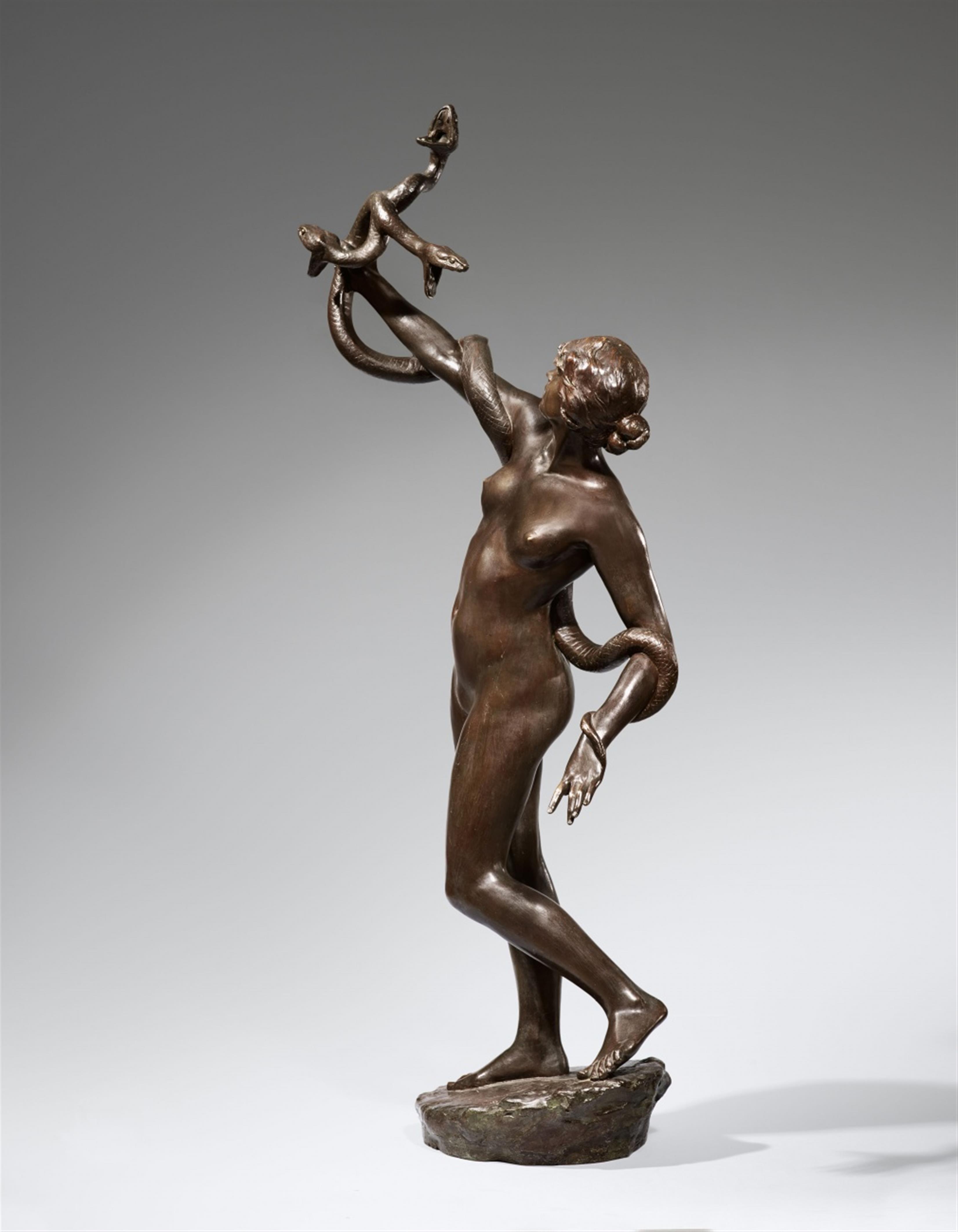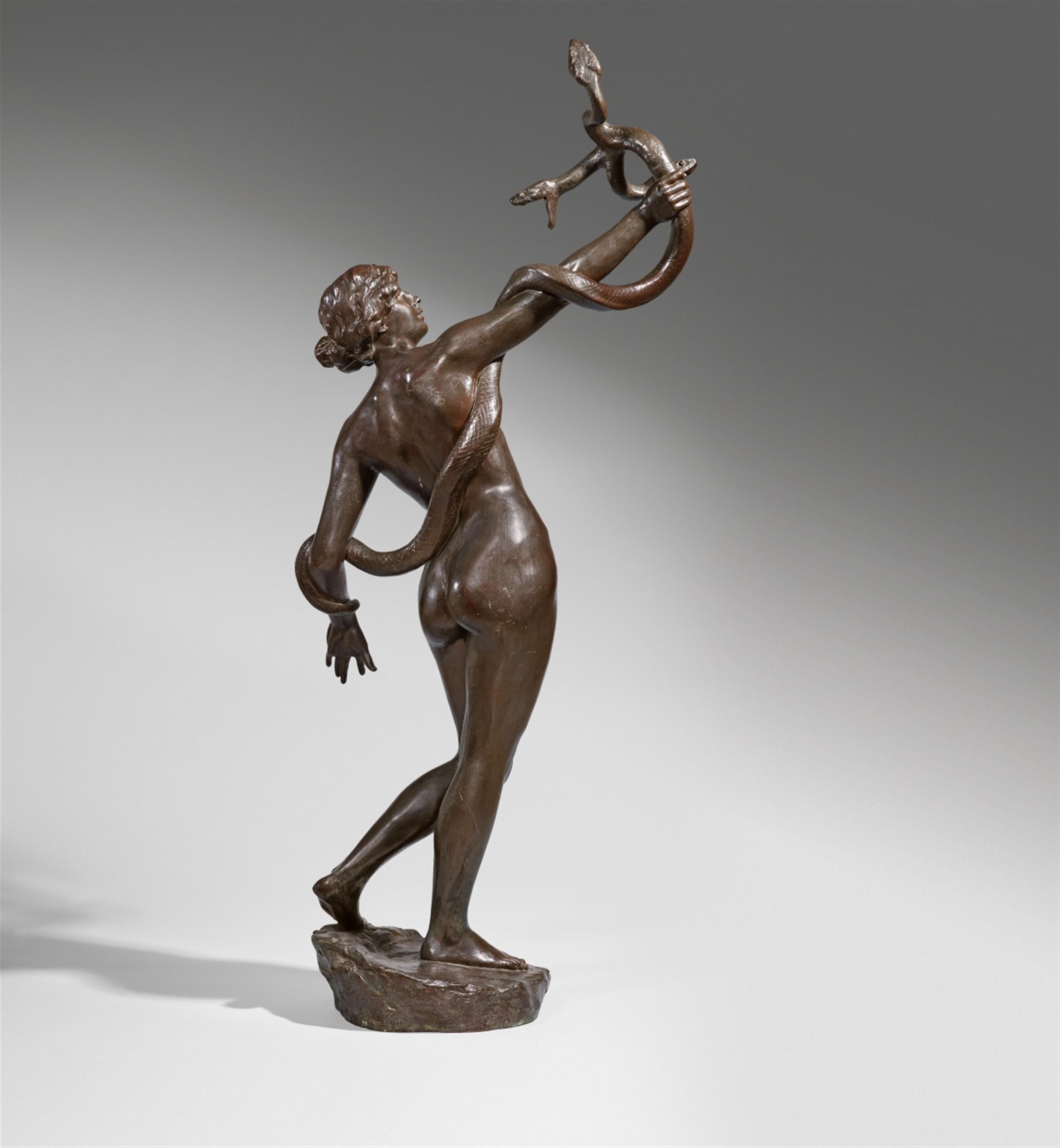Fritz Klimsch
Schlangenbändigerin
Circa 1899
Bronze Height of figure 119 cm, overall 144.8 cm Signed 'F. Klimsch' recto on the naturalistically formed cast-with base and the annotation "Guss v. H. Noack Wilmersdorf" verso on plinth. - Superficial traces of rubbing on the back and on the front of the thigh.
“When I say antiquity was my greatest inspiration, that is not to say that I copied it, because copying is always something dead; instead, I learned from it how to recognise the form of the body vividly and in its great simplicity. The effect that a living body has on me is, after all, the main thing in its representation, not the slavish imitation of the forms. When I say: antiquity was my greatest inspiration, I do not, on the other hand, mean to say that it alone fascinated me.” (Fritz Klimsch in a letter to his son Uli, from 25 March 1937, cited in: Hermann Braun, Fritz Klimsch: Werke, exhib. cat. Galerie Koch, Hannover 1980, p. 8).
The affinity that the artist articulates here for both the art of antiquity and the depiction of the body in motion finds its expression in the large bronze on offer. The artist presumably found inspiration for the subject in the antique theme of Hercules' battle with the many-headed Hydra. Thematically similar motifs also exist in ancient art, for example, the famous Laocoon group; however, there is no concrete model for the struggle of a young woman with a three-headed serpent. The subject provides Klimsch with an opportunity to represent the nude female figure in a complexly balanced, dynamic motif. The positioning of the legs, featuring a weight-bearing and a relaxed leg, suggests the motion of a graceful step; her upper body's bending slightly to the side and backwards illustrates her startled drawing back and simultaneously presents itself to the viewer in this way. The arched pose of the body is countered by the upward diagonal of the outstretched arms. The serpent's body elegantly winds its way up around them and culminates in the three menacing heads, which strike out in different directions. In its evocative use of line, the bronze is related to art nouveau.
The “Schlangenbändigerin” was created only five years after Fritz Klimsch finished his studies at the Berlin Hochschule für bildende Künste. Thus, it belongs to the artist's earliest works. Elli Weber served as a model for the female figure, for whom he had a preference at that time.
Catalogue Raisonné
Cf. Braun 11 (there inscribed as a metal cast, illus. of the figure and snake with single head)
Certificate
With a certificate by Hermann Braun, Hanover, dated 13 August 2007
Provenance
Neumeister, Munich, auction 42, 15 Nov. 2007, lot 587; Private collection, Europe
Literature
The Studio. An illustrated Magazine of Fine and Applied Art, London 1900, Vol. Twenty, Studio-Talk, p. 58 with illus.( figure and snake with single head)
Exhibitions
Berlin 1898, Grosse Berliner Kunst-Ausstellung, cat. no. 1381, without illus. (presumably figure and snake with single head) annotation "verkäuflich" (for sale); Frankfurt 2010 (Museum Giersch), Die Bildhauer August Gaul und Fritz Klimsch, p. 176 with full-page colour illus. (zinc cast), pp. 212 with full-page colour detail




